The real 3-star Michelin meal behind Ruth Reichl’s most decadent eating scene in ‘The Paris Novel’
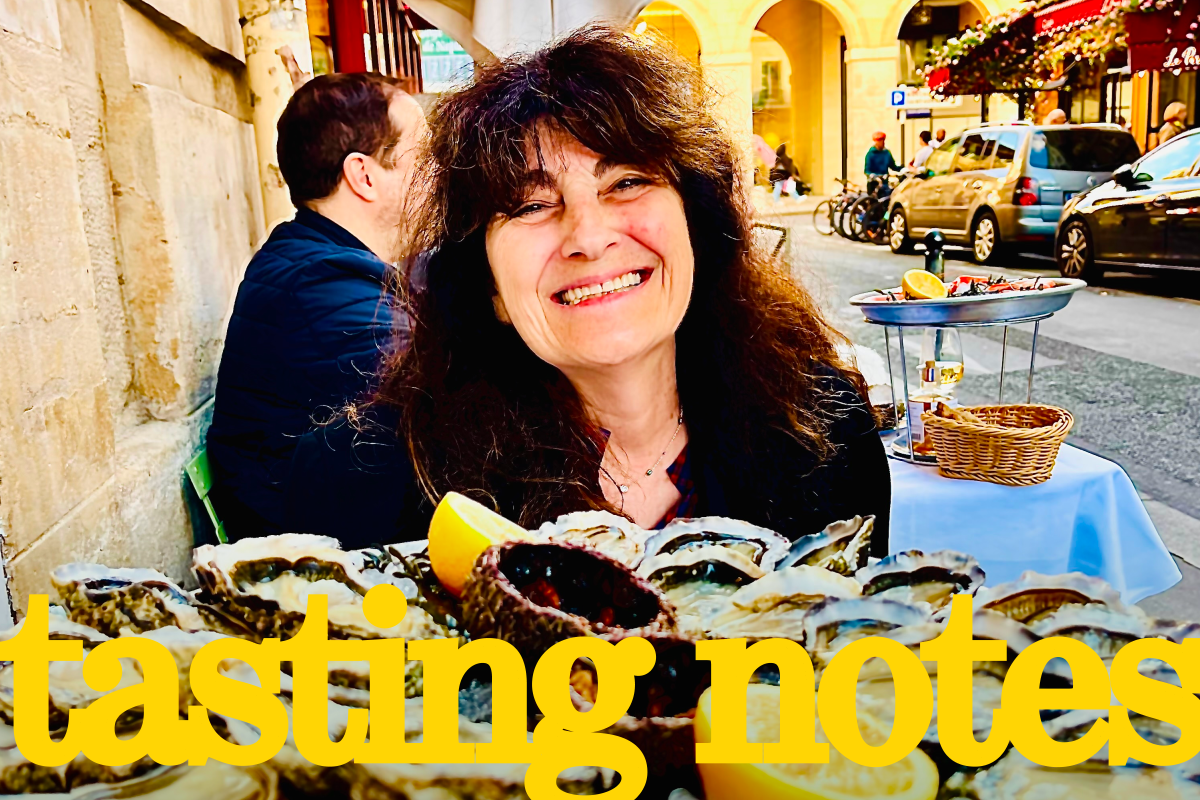
- Share via
Many of Ruth Reichl’s decadent eating scenes in “The Paris Novel” were based on real meals she reported on for the L.A. Times. Plus, L.A.’s best cookies, new restaurant openings, a $400 pineapple, Red Lobster gluttony and California’s cannabis cafe bill. I’m Laurie Ochoa, general manager of L.A. Times Food, with this week’s Tasting Notes.
Adventures with Ruth

“What I would really like,” the French chef Marc Meneau told Ruth Reichl in 1990 when she was this paper’s restaurant critic, “is to throw out the foie gras at the end and just eat the lentils.”
Reichl was at the Michelin three-star l’Espérance in Saint-Père-sous-Vézelay, two and a half hours outside Paris, and had set out to discover what some of the world’s best chefs at the time could teach a California critic about fine dining.
“He cooks a whole foie gras in a pot of lentils — along with lard, onions and carrots,” she wrote in her article. “It comes to the table — the entire foie gras! — in its own pot. Then it is sliced and served with gros sel and pepper. The combination is extraordinary.”
I was working for Reichl at this paper when she wrote those words. That foie gras, as she described it in print and in person, has stuck in my memory as one of the world’s great dishes that got away. I never had the chance to eat the cooking of Meneau, who closed his restaurant in 2015 and died during the COVID pandemic in 2020.
But when I picked up Reichl’s latest book, “The Paris Novel,” and got to the part where her heroine, Stella St. Vincent, is taken to l’Espérance, there was that foie gras, presented by the chef himself to the young American woman still learning the pleasures of the table. But this time, with the power of fiction, Reichl fulfilled the chef’s wish from 1990.
“With a flourish, the chef stuck a fork into the liver, pulled it out, set it aside,” Reichl writes in the novel. “‘Au revoir le foie gras.’ Then he scooped the lentils onto their plates. ‘I have always wanted to do this. And I knew you were the one who would appreciate it.’”
Stella is also served ortolan in Paris by L’Ami Louis founding chef Antoine Magnin; a jewel box of a salad by Alain Passard with chervil, parsley, tarragon, sage and blue borage petals treated as precious stones; and some of the first sous vide successes by Jean Troisgros, not only foie gras but salmon “caught just this morning in the Allier,” says the novel, and served with an abstract-painting-like slash of sorrel sauce. “The flavor is so green I feel like I’m eating color,” says Stella.
Of course, there is more foie gras and dozens of oysters, including Meneau’s, which “trembled,” she writes through Stella’s eyes, “suspended in jellied sea water, as if Meneau had caused the tides to stop.”
Back in 1990, wrote Reichl of the real meal that inspired the scene: “In Marc Meneau’s hands foie gras turns to liquid and seawater jells. It’s magic.”
Stella also gets to make hollandaise with a mortar and pestle alongside the great American-in-France cookbook writer Richard Olney — someone I did get to interview during my time working for Reichl.
But of all the magical foods Stella eats in “The Paris Novel,” set in 1983 when France’s real-life food legends were breaking old traditions and setting a new template for fine dining, it’s the lentils minus the foie gras with which they were cooked that I consider the most decadent dish in the novel.
Though I’ll never eat those lentils, I’ve been lucky enough to have many other wonderful meals with Reichl, including several three-star adventures. But one of the most fun outings we’ve had over the years was the day pictured above when we ate oysters at Huîtrerie Régis and then went around the corner and slid into a booth at Brasserie Lipp for pig trotters.
“It’s the most perfect oyster bar,” Reichl wrote of Huîtrerie Régis in her Substack newsletter La Briffe, “and the place to try the coppery, unforgettable Belons that taste like no other oyster. A fine place to bid farewell to a city where the food has never been better.”
L.A.’s most desirable cookies
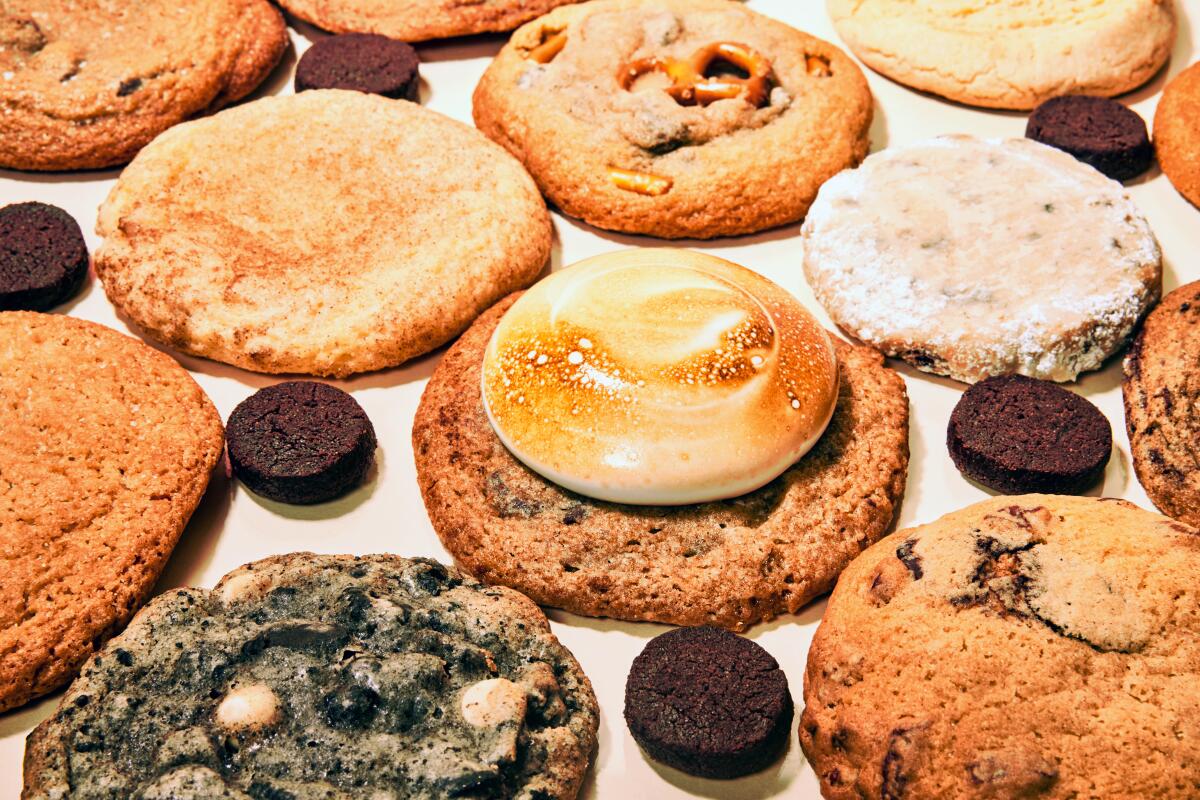
“The cookie scene here has gotten so competitive,” writes assistant food editor Danielle Dorsey in this week’s guide to 24 of the best cookies in L.A., “that a handful of East Coast shops have relocated to get in on the action”
Certainly, if you are a cookie lover, you’ve noticed that some of the best places require patience, as deputy food editor Betty Hallock observed: “A child waiting in line on a recent Sunday at Gusto in Long Beach wailed to his dad, ‘Why does this place have to be so popular?!’”
Stephanie Breijo and Jenn Harris joined Dorsey and Hallock on an epic cookie quest that included “Lo Hoang’s cult-favorites” at Largwa; the “craggy ... gooey ... cakey” almond rocher cookies at Jordan Kahn‘s Destroyer, and Chip Cookie’s so-called “Better Than Sex Chip.”
If you prefer to bake your own cookies, Betty Hallock compiled 10 of her favorite cookie recipes from our archives for tomorrow’s cooking newsletter, which comes out every Sunday. If you’re not a subscriber, you can sign up here.
The $395.99 pineapple
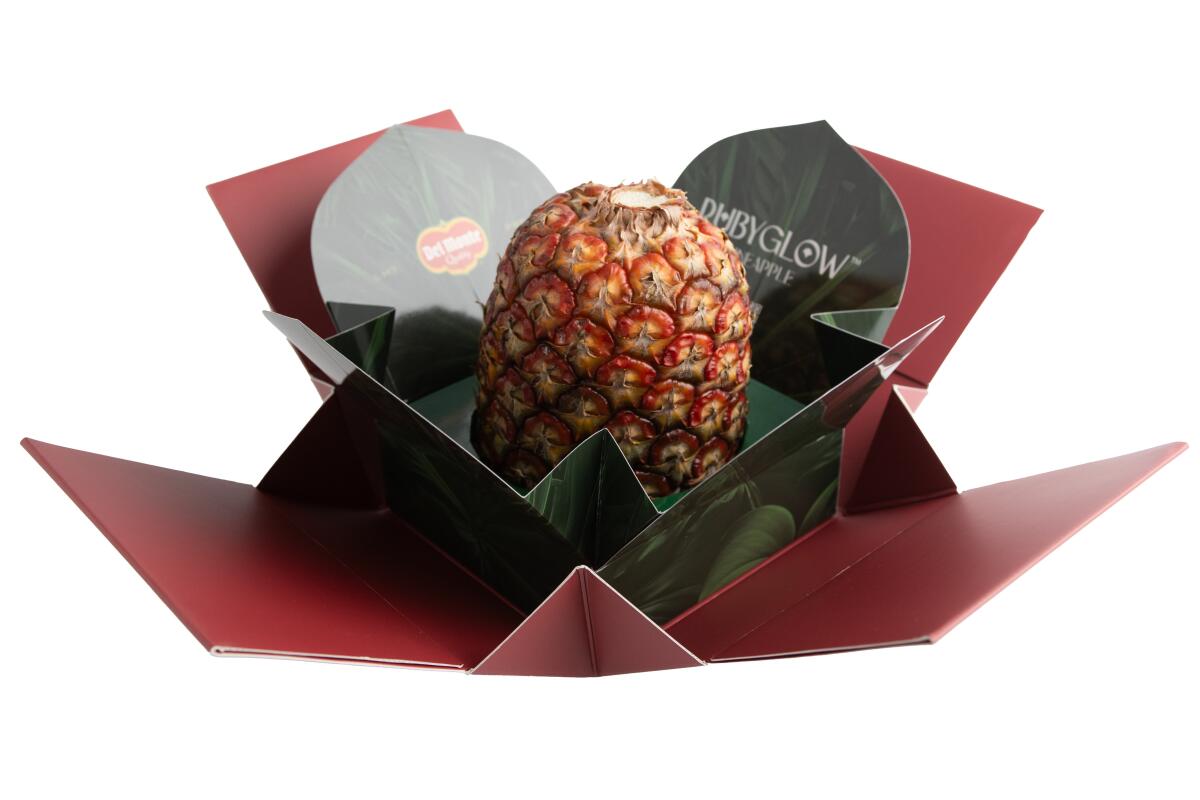
Luxury prices for fruit are not a new phenomenon. Japan’s famed square watermelons ($800 in 2017) and even pricier bowling ball-shaped densuke watermelons ($6,100 in 2008) are just two examples of rare and pricey fruit. This week, Cindy Carcamo wrote about the $400 pineapple ($395.99 to be exact) from Melissa’s Produce and Fresh Del Monte Produce. The Rubyglow pineapple is prized for its sweetness and ruby-like exterior — and as of Monday this year’s harvest is sold out.
“The rise of luxury fruits comes at a time when some Americans are struggling to afford groceries and food insecurity is [growing],” Carcamo writes. The pineapple “reflects a deepening chasm between luxury food consumers and average American families just scraping by.”
Ripe ideas
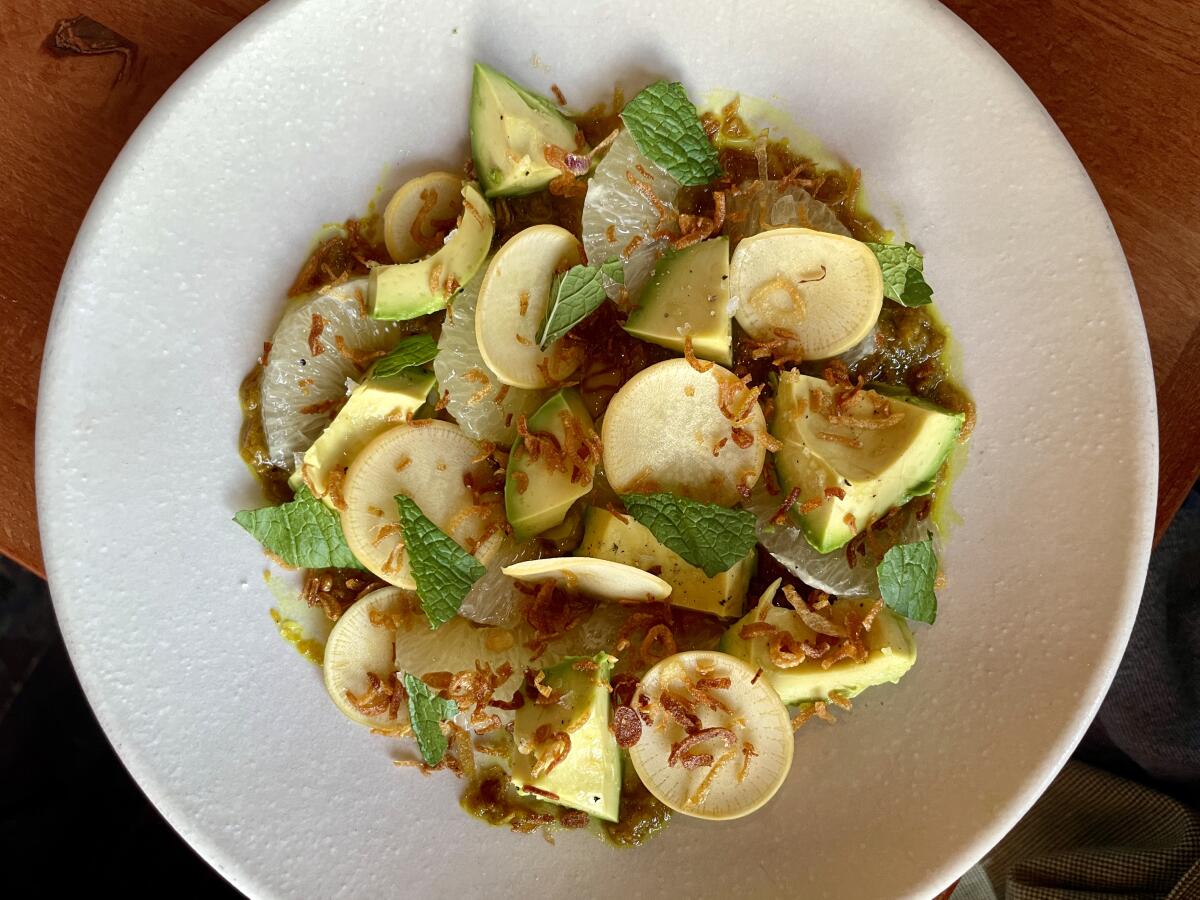
“It was a fruit salad that rivaled the most complex, extravagant dish on any tasting menu I’ve had in recent memory. Subtle and nearly monochrome, it was calming on the eyes like a Robert Ryman hanging in the Tate Modern.” That’s Jenn Harris on the oroblanco and avocado salad she ate at Santa Monica’s Rustic Canyon, created by Jeremy Fox’s sous chef Elijah G Deleon. The salad, made with fruit from JJ’s Lone Daughter Ranch in Redlands (buying JJ’s avocados from Laura Ramirez is one of the delights of going to the Hollywood Farmers Market) inspired Harris to find three great savory fruit salad recipes, including one with roasted beets, citrus and labneh from “Vegetarian Salad for Dinner” author Jeanne Kelley, profiled last year by novelist Michelle Huneven.
Passings
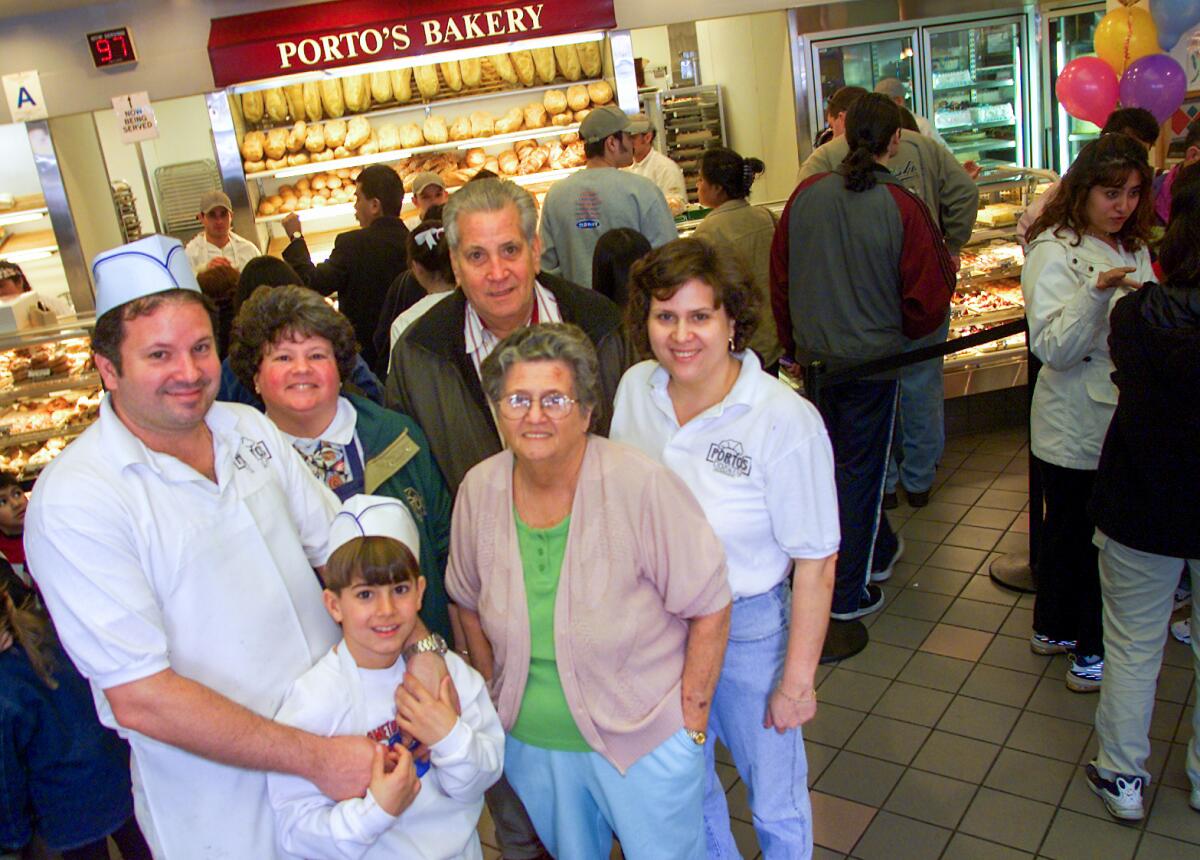
This week brought news of the passing of two very different and influential food figures.
“If you’ve ever held a pastel-yellow box full of Cuban pastries in Los Angeles, you’ve most likely tasted the legacy of Raul Porto Sr.,” wrote Stephanie Breijo. “The patriarch and co-founder of Porto’s, one of the region’s most popular bakery chains, died at the age of 92.”
And as Christie D’Zurilla and Alexandra Del Rosario reported, Morgan Spurlock, “the Oscar-nominated filmmaker who in ‘Super Size Me’ documented the deleterious physical and psychological effects of a fast-food diet,” died this week of cancer at 53.
Though he stepped down from his production company after allegations of a “fratty” work environment, there’s no denying that, as D’Zurilla and Del Rosario wrote, “‘Super Size Me’ sparked larger conversations about diet and lifestyle [and] indirectly prompted McDonald’s to scale back its super-size options.”
You’re reading Tasting Notes
Our L.A. Times restaurant experts share insights and off-the-cuff takes on where they’re eating right now.
You may occasionally receive promotional content from the Los Angeles Times.
Also ...
- This week’s restaurant openings column from Stephanie Breijo includes details about the new Studio City location of smashburger specialists Heavy Handed; Shibumi chef David Schlosser’s new Kushiba, serving kushikatsu, or fried skewers, in Echo Park; Hato Sushi in Koreatown from Parks BBQ alum Tony Jin; a new outpost of famed Seoul coffee spot Camel Coffee; Santa Monica’s burger spot Burgette; a Koreatown outpost of Florence’s famed sandwich shop All’Antico Vinaio; a revamp of Venice’s Gran Blanco, and the return of beloved Spanish restaurant Cobras & Matadors.
- Columnist Michael Hiltzik makes the case that it wasn’t only customer gluttony and a $20 all-you-can eat shrimp promotion that led to the Red Lobster chain’s bankruptcy, but the financial machinations of its owners.
- Columnist Gustavo Arellano makes the case that California lawmakers’ plan to add folic acid to tortillas is a bad idea.
- Columnist L.Z. Granderson makes the case that America needs cannabis cafes.
Eat your way across L.A.
Like what you're reading? Sign up to get it in your inbox every week.
You may occasionally receive promotional content from the Los Angeles Times.
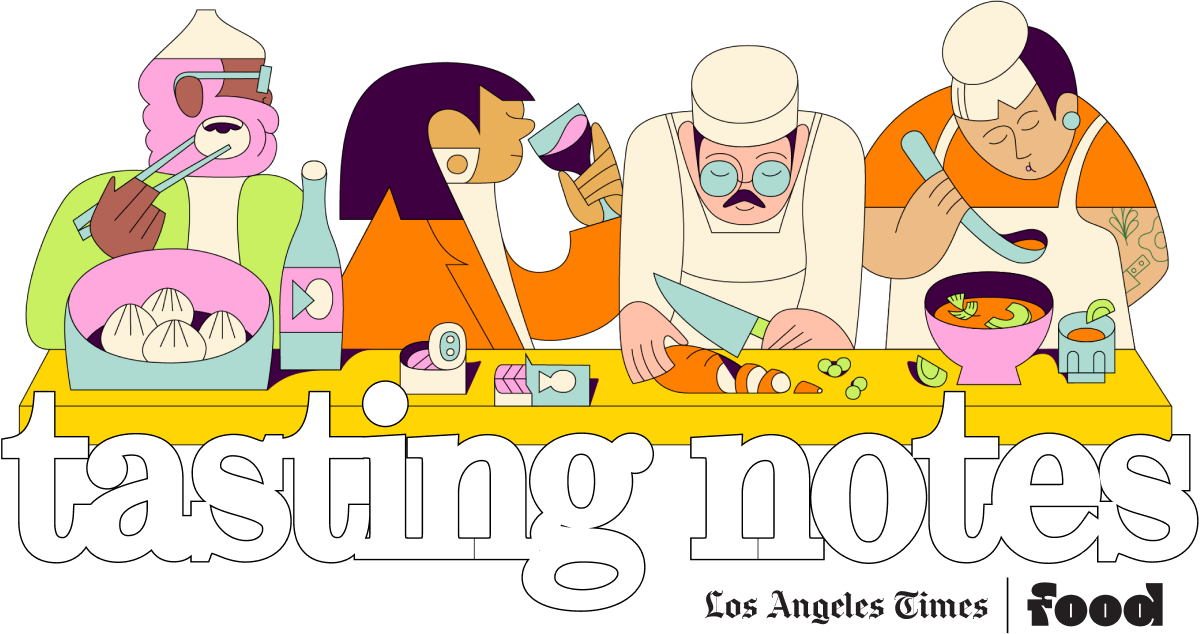
Eat your way across L.A.
Get our weekly Tasting Notes newsletter for reviews, news and more.
You may occasionally receive promotional content from the Los Angeles Times.




